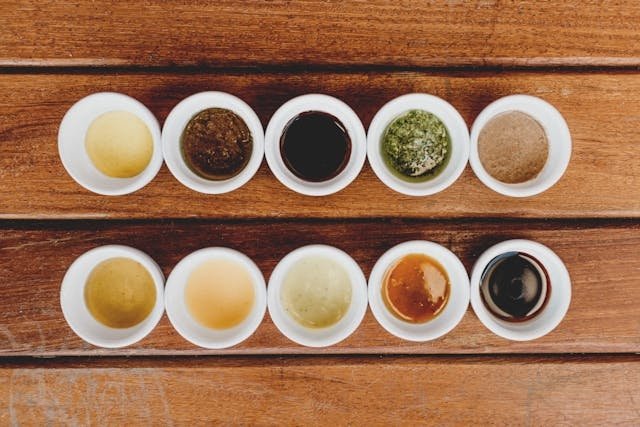Introduction
When we think about food, it’s not just about taste or nutrition. Food is identity. It reflects who we are, where we come from, and how we live. Across the world, different types of food, cuisines, cultures, and meals for different age groups offer a fascinating window into global diversity and human creativity. Whether you’re a food enthusiast, a parent, or someone interested in learning about international dishes, this article is your friendly guide to understanding the wonderful world of food.
Types of Food
Food can be categorized in many ways, but here are the most common types based on nutritional value and function:
- Fruits and Vegetables – Fresh produce packed with vitamins, fiber, and antioxidants. Examples: apples, spinach, berries.
- Proteins – Important for growth, development, and muscle repair. Found in meat, eggs, fish, tofu, and beans.
- Carbohydrates – The body’s primary energy source. Includes rice, bread, pasta, potatoes.
- Dairy – Rich in calcium and vital for bone health. Includes milk, cheese, yogurt, and alternatives like soy or almond milk.
- Fats and Oils – Healthy fats support brain function and hormone balance. Examples: avocados, nuts, seeds, olive oil.
- Beverages – From water to milk and herbal teas, drinks hydrate and sometimes nourish the body.
- Processed Foods – These range from lightly processed (frozen veggies) to highly processed (chips, soda). Eat in moderation.
Food Cuisines Around the World
Cuisines reflect the unique tastes and traditions of different regions. Here are some globally recognized ones:
- Italian Cuisine – Known for pasta, pizza, tomato sauces, and olive oil. Rich in flavor but simple in preparation.
- Indian Cuisine – Diverse and full of spices, including dishes like curry, biryani, samosas, and lentil stews.
- Chinese Cuisine – Features stir-fries, dumplings, noodles, rice dishes, often flavored with soy sauce and garlic.
- Mexican Cuisine – Celebrated for its use of corn, beans, avocados, and bold flavors. Includes tacos, enchiladas, guacamole.
- French Cuisine – Known for pastries, breads, fine meats, and sauces. Think croissants, coq au vin, and escargot.
- Japanese Cuisine – Clean, minimal, and balanced. Sushi, sashimi, miso soup, and rice are staples.
Types of Food Cultures
Food culture includes the traditions, beliefs, and values people attach to their food. Some key types include:
- Traditional Culture – Recipes passed down generations, often tied to holidays or rituals.
- Modern Fast-Food Culture – Centered on speed and convenience. Burgers, fries, takeout dominate urban menus.
- Health-Driven Culture – Focuses on organic, whole foods, clean eating, and special diets.
- Sustainable Culture – Promotes local sourcing, minimal waste, and ethical farming.
- Fusion Culture – Combines ingredients and cooking methods from different cuisines to create new dishes.

Types of Food Names
Food names can tell you about their ingredients, origin, or preparation style:
- Ingredient-Based: Chicken salad, egg sandwich, beef stew
- Geography-Based: Greek yogurt, Italian sausage, French fries
- Cooking Method: Roasted veggies, fried rice, steamed dumplings
- Marketing or Creative Names: Happy Meal, Veggie Delight, Beyond Burger
Types of Food to Eat
Depending on your goal—be it health, energy, or indulgence—there’s a food for every need:
- Healthy Options: Leafy greens, salmon, quinoa, berries
- Energy Boosters: Peanut butter, bananas, oats, yogurt
- Comfort Foods: Mac & cheese, mashed potatoes, meatloaf
- Low-Calorie Choices: Zucchini, watermelon, boiled eggs
- High-Protein Foods: Chicken breast, tofu, lentils, Greek yogurt
- Detox or Cleansing Foods: Green tea, lemon water, spinach
Types of Food for Kids
Kids require meals that are both nutritious and fun. Here are types they typically enjoy:
- Fruits and Vegetables: Apple slices, grapes, carrot sticks, peas
- Snacks: Cheese cubes, yogurt, granola bars, banana chips
- Balanced Meals: Mini sandwiches, veggie pasta, chicken wraps
- School Lunch Ideas: Quesadillas, boiled eggs, fruit cups, crackers with cheese
- Allergy-Friendly Choices: Nut-free bars, soy milk, gluten-free bread, egg-free muffins
FAQs
What are the main types of food?
Fruits, vegetables, proteins, carbohydrates, fats, dairy, and beverages.
What makes a cuisine different from food culture?
Cuisine refers to cooking styles; culture is about traditions and how food is used in society.
What are easy healthy snacks for kids?
Yogurt, fruit slices, nut-free granola bars, or veggie sticks with hummus.
Why do food cultures vary worldwide?
They reflect geography, religion, climate, and history.
What are some fun fusion foods?
Sushi tacos, butter chicken pizza, or kimchi quesadillas.
Can processed food ever be healthy?
Yes, minimally processed items like frozen veggies or canned beans are nutritious.
What are energy-rich foods for busy days?
Oats, bananas, boiled eggs, trail mix, and whole grain toast.
What is comfort food?
Foods that offer emotional satisfaction, often linked to nostalgia.
What should children eat daily?
A mix of protein, whole grains, fruits, veggies, and dairy or alternatives.
How can I help my child try new foods?
Introduce one new item at a time alongside familiar favorites in a fun, pressure-free way.
Food is more than a necessity—it’s a shared experience, a link to our roots, and a gateway to new cultures. Whether you’re cooking at home, exploring global flavors, or preparing meals for your kids, understanding the many types of food can make eating more enjoyable and meaningful.



